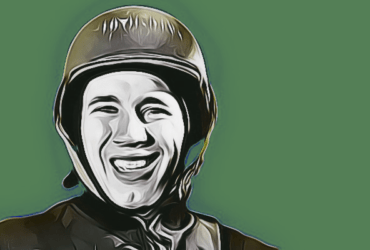When a much different America suffered its “9/11” moment, Bob Feller – the best pitcher in baseball – didn’t hesitate to take action. On December 8, 1941, one day after the Japanese attacked Pearl Harbor, Feller voluntarily enlisted in the U.S. Navy. At the age of 23, already a six-year veteran of the major leagues, Feller was at the height of his fame and pitching brilliance. But his decision to enter the military wasn’t difficult.
“We needed heroes, fast,” Feller explained after the war. The unselfish Feller was one of those heroes. He died on Wednesday, December 15, 69 years after the attack that propelled the U.S. into World War II.
An All-Star pitcher for the Cleveland Indians, Feller was one of the highest paid players in the game. He had a 3-C draft deferment as the sole supporter of his family, so he didn’t have to enlist. He could have sat out the war. It was never an option for the patriotic, strong-willed farm boy from Van Meter, Iowa.
“We were losing the war,” Feller said. “I never thought about returning to baseball, I just did what I had to do, what a lot of guys did.”
When Feller arrived in Chicago on December 9th to be sworn in at the Great Lakes Naval Training Center, his father was dying from cancer back on the family farm in Van Meter. Like millions of other American men, Feller was processed and assigned for duty. He served initially in the Navy’s physical fitness program which was organized by former boxing champion Gene Tunney. But Feller quickly grew impatient and requested to be transferred to gunnery school. He was placed on the U.S.S. Alabama as chief of a gun crew.
During the war, Feller served first in the icy waters of the North Atlantic, as the Alabama escorted American ships threatened by German submarines. Later, he took part in eight separate invasions in the South Pacific against the Japanese. At his battle station he commanded 24 men in his gun crew. He served in the Navy for more than three-and-a-half years, missing the meat of his baseball career: all of 1942, 1943, and 1944, as well as most of 1945.
Feller received five campaign ribbons and eight battle stars for his service in the U.S. Navy in World War II. Less than two weeks after the Japanese surrendered in August of 1945, Feller was discharged. He wasted little time in getting back to baseball. Two days after traveling from the Great Lakes Naval Training Center to Cleveland, Feller was on the mound for the Indians.
He received a frenzied reception in Cleveland. So many people called the ballpark to make ticket arrangements that the switchboard broke down. Ultimately, 47,000 fans flooded into Municipal Stadium for the game on August 24th. Prior to the game, Feller was presented with a jeep and other presents from the team and fans. The governor of Ohio attended the contest, as well as Cleveland diamond legends Tris Speaker and Cy Young. Feller didn’t disappoint the huge crowd. He fanned the first batter of the game – Detroit’s Jimmy Outlaw – prompting the fans to give him a standing ovation. Showing no rust at all, Feller was in top-notch form as he struck out 12 Tiger batters en route to a complete game, four-hit victory. He struck out Outlaw to end the game and was carried off the field.
The following season, Feller was still slinging it – as he enjoyed one of the best seasons of his career. The 27-year old won 26 games, struck out a career-high 348 batters, while throwing 10 shutouts. He was elected to the Hall of Fame in his first year of eligibility in 1962, and spent 48 years as a member of that institution. He never missed an opportunity to express his pride in having fought in the war. He pressed the Hall of Fame to change his plaque to indicate that he’d missed three full seasons due to World War II.
“I’m very proud of my war record, just like my baseball record. I would never have been able to face anybody and talk about my baseball record if I hadn’t spent time in the service.”







